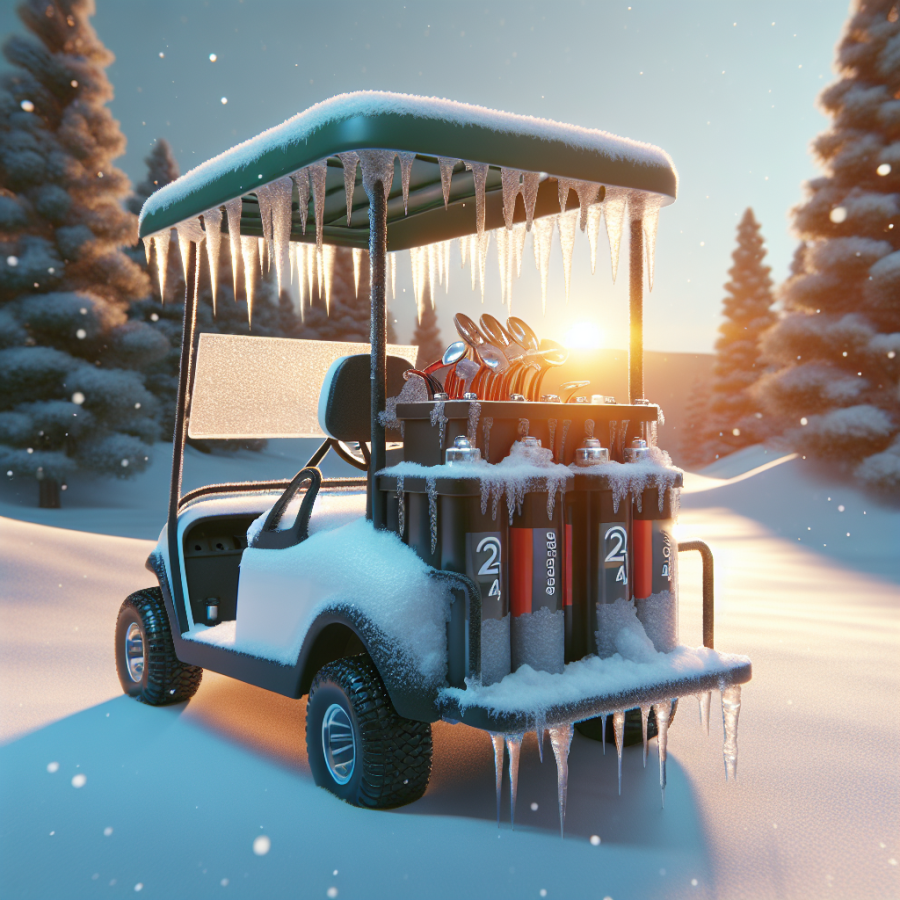Factors Contributing to Golf Cart Battery Freezing and How to Prevent it
Golf cart batteries, especially those used in regions with low temperatures, can indeed freeze. This may result in major issues such as loss of voltage and degradation of the battery's lifespan. There are several factors that contribute to golf cart battery freezing. These include the type of battery, the state of the battery charge, and the surrounding temperature. We further discuss these factors below:
1. Type of Battery:
Lead-acid batteries are the most common in the golf cart industry. These batteries have a liquid electrolyte solution that can freeze under certain conditions. However, freezing point often varies depending on the state of charge. Usually, a fully charged lead-acid battery freezes at a much lower temperature compared to a discharged one.
2. State of Battery Charge:
The battery's state of charge also plays a significant role in determining whether it will freeze or not. A fully charged battery contains more acid and therefore has a lower freezing point. In contrast, a discharged battery contains more water, raising its freezing point. In essence, a fully charged golf cart battery is less likely to freeze than a discharged battery.
3. Surrounding Temperature:
Lastly, the surrounding temperature is a major factor that contributes to battery freezing. During winter months, particularly in regions with severe cold, golf cart batteries are more likely to freeze. When the temperature falls below the freezing point of the battery's electrolyte solution, the battery may freeze.
Preventing Golf Cart Battery Freezing
Now that we've looked at the factors that contribute to golf cart battery freezing, let's discuss some steps to prevent this:
1. Keep Batteries Fully Charged:
Keeping your golf cart batteries fully charged throughout the winter helps to lower their freezing point. As we mentioned earlier, a fully charged battery contains more acid, which reduces the chances of freezing. So, it is advisable to charge your batteries before storing your golf cart for the off-season.
2. Use Battery Insulators:
Battery insulators are designed to keep batteries warm by trapping heat. These can be especially beneficial during extreme cold weather. The insulator acts as a blanket around the battery, helping to maintain an adequate battery temperature.
3. Store in a Warmer Environment:
If possible, store your golf cart in a temperature-controlled environment during winter. This could be a heated garage or any place that stays above the freezing temperature. Storing a battery in a colder environment increases its chances of freezing.
4. Regular Battery Maintenance:
Routine maintenance helps prevent battery freezing.
Read also:
Choosing the Right Golf Tees: A Comprehensive Guide for Players
Understanding the Structure and Composition of Golf Cart Batteries
Golf cart batteries may seem like simple components, but in reality, they have a complicated structure that helps them perform their critical function – serving as the power source for your golf cart. To understand how extreme weather conditions, such as freezing temperatures, can affect these batteries, it is essential to first understand what makes up golf cart batteries.
Golf cart batteries are usually lead-acid batteries. They come in three types: wet cell (or flooded), AGM (Absorbed Glass Mat), and Gel Cel. All these variations are designed to produce a high amount of current over a long period but differ significantly in their construction and maintenance requirements.
Wet cell batteries are the most traditional and commonly used type. They are made up of a series of cells, each consisting of lead plates submerged in a mixture of sulfuric acid and water, which acts as an electrolyte. This chemical reaction creates an electric current. These batteries tend to be cheaper but require regular maintenance such as topping off with distilled water.
AGM batteries, on the other hand, use a fiberglass mat to absorb the electrolyte. The mat is wedged between the lead plates, reducing the battery's vibration and making it more resistant to damage. These batteries are sealed and do not require as much maintenance as the wet cell batteries, but they cost more.
Gel cell batteries are similar to AGM batteries in that they are also sealed and require less maintenance. But instead of a fiberglass mat, these batteries suspend the electrolyte in a silica-based gel. This makes them even more resistant to damage and vibration, but they also come with a steeper price tag.
Before delving into the impact of freezing conditions on golf cart batteries, it’s useful to understand why these batteries get discharged. All golf cart batteries self-discharge over time, whether in use or not. Factors like the health of the battery, the temperature, and the charge state can significantly affect the rate at which the battery self-discharges. In colder weather, for instance, the self-discharge process slows down.
Now, when a battery's state of charge decreases, the electrolyte's specific gravity also reduces. In a fully charged battery, the electrolyte is a dense, high specific gravity sulfuric acid solution, but in a discharged state, it becomes more like water.
Water has a freezing point of 0°C, so you can see why a discharged battery is far more susceptible to freezing than one that is fully or even partially charged.




